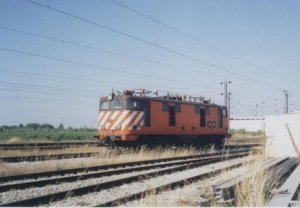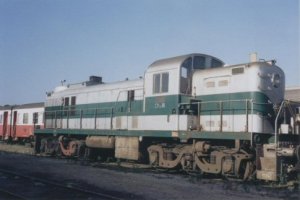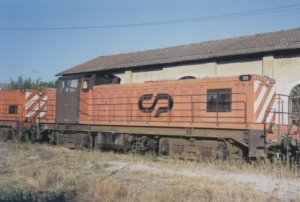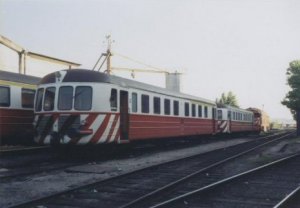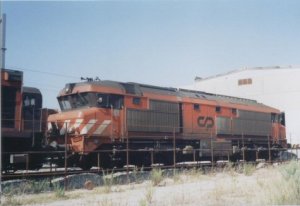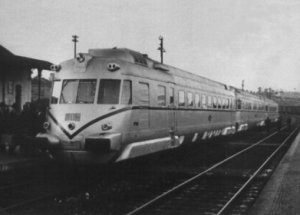Hello to you all "The-Gaugers"
I was asked in one of other posts to talk a bit about Portuguese Railroads.
Our railways started late, concretely in October,1856 in a small Line from "Caes dos Soldados"(Soldier's Pier - now Lisbon Main-Sta.Apolonia) to "Carregado"... with some troubles this inauguration, since the Royal Train, hauled by a british locomotive could barely carry the train for the 24 kilometers of line, letting go the first carriage just a few kms from Lisbon, then the second a few kms later... and when the train arrived at Carregado only the locomotive and the King's and the Prince's wagons arrived. In that year's press, journalists said that, if the line was longer, only the locomotive would have arrived...
With the development of the Railroads in Portugal, lines spread all over the country, until the mid-1970's... then, with the diesel plan, lots of lines were closed, and now only about 2/4 of the total network are still active...
Portugal received the first diesel locomotives after the II World War from the US, with the Alco Locomotives and Swede's Nohabs in 1948. By that time, steam still ruled all over the country, and only with the electrification of the first lines (Sintra suburban line and North from Lisbon to Carregado in 1956) With the overhead came to Portugal the 2500's series locomotives and the first Budd's UTE (EMU - Electric Triple Units).
The first picture is from the 2500 units from CP-Caminhos de Ferro Portugueses, the pioneers from overhead in Portugal...
I was asked in one of other posts to talk a bit about Portuguese Railroads.
Our railways started late, concretely in October,1856 in a small Line from "Caes dos Soldados"(Soldier's Pier - now Lisbon Main-Sta.Apolonia) to "Carregado"... with some troubles this inauguration, since the Royal Train, hauled by a british locomotive could barely carry the train for the 24 kilometers of line, letting go the first carriage just a few kms from Lisbon, then the second a few kms later... and when the train arrived at Carregado only the locomotive and the King's and the Prince's wagons arrived. In that year's press, journalists said that, if the line was longer, only the locomotive would have arrived...
With the development of the Railroads in Portugal, lines spread all over the country, until the mid-1970's... then, with the diesel plan, lots of lines were closed, and now only about 2/4 of the total network are still active...
Portugal received the first diesel locomotives after the II World War from the US, with the Alco Locomotives and Swede's Nohabs in 1948. By that time, steam still ruled all over the country, and only with the electrification of the first lines (Sintra suburban line and North from Lisbon to Carregado in 1956) With the overhead came to Portugal the 2500's series locomotives and the first Budd's UTE (EMU - Electric Triple Units).
The first picture is from the 2500 units from CP-Caminhos de Ferro Portugueses, the pioneers from overhead in Portugal...


